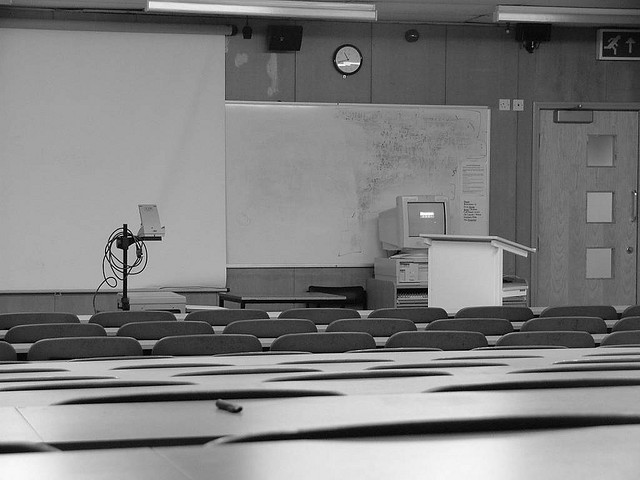You have /5 articles left.
Sign up for a free account or log in.
Katy Meyers Emery is an Anthropology PhD candidate at Michigan State University. You can follow her on her website Bones Don’t Lie or on Twitter @bonesdonotlie.

This past week was a big week at Michigan State University. The libraries were full of students, there was an energy in the air despite the single-digit temperatures, and everyone seemed a little bit perkier than they have been for the past frigid month. It is the middle of the semester, which meant that we had our first exam in the course I’m teaching. More importantly, it means that this week is Spring Break, which means that, like every other grad student, I’ll be spending this time catching up on dissertation research and writing.
It also means I have some free time to reflect on how my course is going. As you know from my first post (The Experiment Begins: Teaching My First Class, Part I), this is my first time designing, leading, and teaching my own course. I had some fairly strong goals for what I wanted to course to be, and was trying to use some of the new pedagogical methods I’ve been learning about. Here is a quick review of the methods and how they are playing out:
-
Backwards Design: For each class period, I already know exactly what my goals are, and how they relate to the broader course goals. (You can see the class goals and objectives here on Popplet.) I can start off each class talking about how what we discussed earlier is going to feed into what we’re learning that day, and it creates a clear narrative.
-
Flipped Classroom Elements: Instead of lecturing, I’ve tried to add discussion and cooperative activities into each class. Students complete all or portions of assignments in class as a group, which allows them to ask questions and solve the problems together. I’ve also used Think-Pair-Share activities to break up the days when I do have to lecture more than usual.
-
Embedding New Technology into Assignments: For this first half of the semester, my students have had two assignments that had new technology as part of them. The first one required them to create a mind-map that outlined the history of archaeology and important archaeologists from each of the main periods of development, with the option of using Popplet to create these. The second assignment required the use of Storify, a story-telling platform that allows users to drag and drop digital resources into a narrative and annotate them with details, to discuss an archaeological controversy.
I had really lofty goals for this course, and even though I haven’t been able to completely flip my classroom (and we’ve had some tech issues), overall, I think the first half of the year has been successful. I’ve learned a lot from this process, but here are the top three things I’ve found with teaching this course.
-
It takes way more time than you think: Honestly, creating an engaging and interactive classroom environment that supports active learning in class is a lot more difficult and time-consuming than I originally thought it was going to be. It takes foresight to find activities that can work within the limits of the classroom (mine is a 210-person course in a very structured lecture hall). The activities that have been the most successful were the ones that I spent the most time creating and thinking about. It takes a lot of time and energy to find ways to engage students, to get them thinking creatively, and to maintain the discussion. I have so much more respect for my teachers who make this look easy. Fingers crossed that it gets easier once it isn’t your first time teaching it.
-
When using digital tools, make the instructions explicit: I made a bad assumption about my students—I assumed that using new technology was going to be easy for them because they come from the “digital native” generation. For future assignments, I plan on including instructional YouTube videos, screenshots of how to make assignments public and share them with me, and also clearer guidelines on what the final project should be. I was very impressed with my students, but I could have made their lives a lot easier and less stressful if I had added more instructions!
-
Sometimes you gotta shake it up: I noticed that these past few weeks my students had become a lot quieter and fewer were engaging in our group discussions. I wouldn’t blame them—Michigan has had record-breaking cold and snow for the past month, and there has barely been any sunlight. On one particularly quiet and freezing day a couple weeks ago, when we were discussing how to determine the age of artifacts, for their Think-Pair-Share question, I asked them to share what they were doing for the weekend with their partner. I let them chat for about two minutes, and then we went back to the real Think-Pair-Share question about the problems with Radiocarbon and Trapped Charge Dating Techniques. It gave them a burst of energy that helped us get our discussion back.
I’m happy with the way this course is working, and hopefully it leads to a better education for my students. We still have another half semester left, and I’m hoping to add more technology, flipped classroom elements, and active discussion to my course.
What advice would you share with grad students looking to try out new methods?
[Photo by Flickr user Andrew Mason and used under a Creative Commons License]




